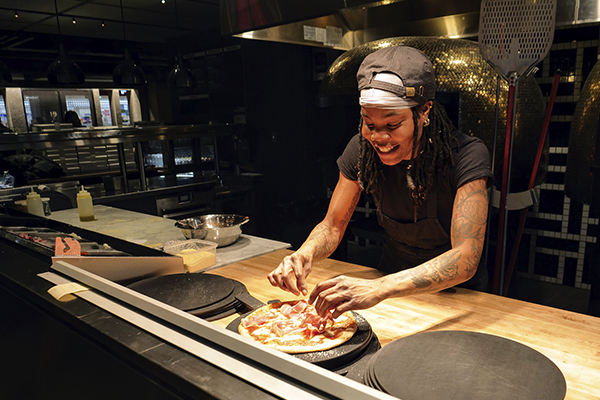BY Lyes Mahouche & Alissa Muller
Philly is known for its cheesesteak, New Orleans for its Po’Boys. In Chicago it’s deep dish pizza, in PEI it’s lobster. And in Ottawa it’s Beaver Tails, in Buffalo it’s wings. Montreal is synonymous with three specialties: poutine, bagels, and smoked meat.
For Tourism Montreal, however, these humble dishes just scratch the surface of what the city has to offer, as it tries to position the city as one of the top culinary destinations in North America.
In 2019, Montreal was home to more than 5929 restaurants, according to Tourism Montreal. That’s a 13 per cent increase from 2012. With one restaurant per 343 residents, this makes it one of densest cities in North America when it comes to its restaurants. As a comparison, New York has one restaurant per 336 residents, despite having around 17 per cent more tourists per capita.
Some of the most coveted food spots in Montreal, particularly for fine dining. Media by Lyes Mahouche.
Montreal is also home to many festivals that highlight the abundance of local gourmet offerings such as YUL EAT, Montréal en Lumière and MTLàTABLE.
That last festival is a Tourisme Montreal initiative in which 150 participating restaurants offer special menus at fixed prices ranging from $17 brunches to $43 multi-course meals. This past November, the event generated more than $8 million for local restaurants.
That’s a 14 per cent increase over the previous year. This growth happens as Montreal’s culinary scene is expanding its multicultural offerings.
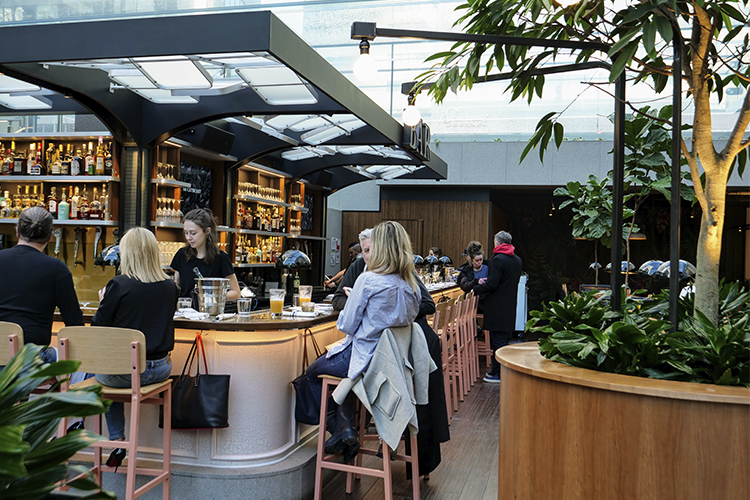
Montreal is one of the densest cities in North America when it comes to restaurants. Photo by Alissa Muller.
“People come here for a whole range of food options,” says Amie Watson, a food writer at the Montreal Gazette. “Montreal has a lot of different types of cuisine and that is appealing to certain kinds of tourists,” she says.
The large immigrant population in Montreal makes it a hub of authentic cuisine from across the globe. Watson explains that one of the things that makes the city unique is restaurants from French-speaking countries like Morocco, Haiti or Vietnam.
A look into Schwartz’s Deli, one of the most iconic restaurants in Montreal. Video by Alissa Muller.
Montreal also distinguishes itself by its relative affordability, says Watson. Compared to New York, or even Toronto, it is much cheaper for someone to open a small restaurant here.
“Thanks to Montreal being affordable and having areas of the city that cater to students, having areas of the city that cater to businesses, especially with a dense downtown population, you get quite a variety of restaurants that can work,” says Watson.
For Tourism Montreal, the new focus is on the city’s young chefs and the creation of a vibrant fine dining scene that remains affordable.
“Like every destination, we have our signature products, but we try to put them aside a bit so we can showcase the new generation of chefs and their creativity,” says Stephanie Laurin, cultural tourism manager at Tourism Montreal.
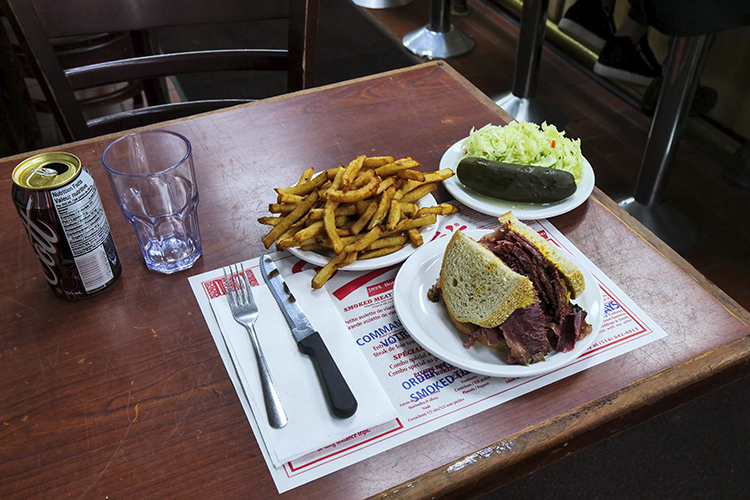
Schwartz’s Deli is famously known for its smoked meat sandwiches. Photo by Alissa Muller.
Our cuisine is promoted through festivals organized throughout the year, as well as three major gourmet food halls that opened in the past six months: Le Cathcart in Place Ville Marie, the Time Out Market downtown, and Le Central in the Quartier des Spectacles.
These food halls function like regular food courts except that they are curated to provide a mix of higher-end cuisine. Most of the participating restaurants offer short, rotating menus of $15 to $20 items that serve as an introductory taste of their higher-end main locations.
“These [food halls] are extraordinary projects. It makes it possible to get a fine dining experience at a very affordable price,” says Laurin. “They are definitely a showcase of local talent that we will advertise to tourists.”
Watson echoes these thoughts.
“A lot of the restaurants [in the food halls] are from fine dining chefs opening second places. It’s not like they’re cutting corners, it really is high end dining and they’re using the same quality meats, same quality ingredients,” she says. “They can really be great introductions for people to fine dining, and then they might go to their high-end place after that once they know the chef.”
Montreal’s place in the fine dining scene is seen in the international attention it has received in recent years. Four of Canada’s 10 best restaurants are in Montreal, according to Canada’s 100 Best Restaurants Awards list. Town & Country Magazine also named Montreal the top North American food destination in 2016.
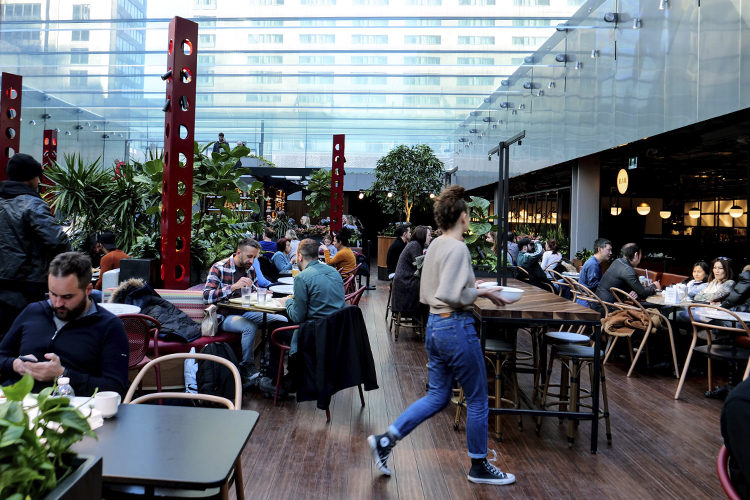
Montreal has one restaurant per 343 residents, approximately. Photo by Alissa Muller.
Tourism Montreal is presently working with its partners on an action plan to solidify the city as the North American food destination.
“We want to focus on marketing our local offerings and products to international tourists,” says Laurin. “We also really want to make sure that the industry stays viable. We know, we see it everywhere, there’s a labour shortage. We have to make sure that we value the professions in the industry at every level.”
Finding a solution to the labour shortage could prove to be a difficult task. “Montreal has too many restaurants in general and not all of these restaurants will last,” says Watson. This very high density makes for a very competitive market.
Most restaurants operate within very slim profit margins to stay competitive. These margins were at 5.8 per cent on average in Quebec, according to a study published by Ryerson University in 2015. This makes it very hard for restaurants to increase salaries to try to attract workers.
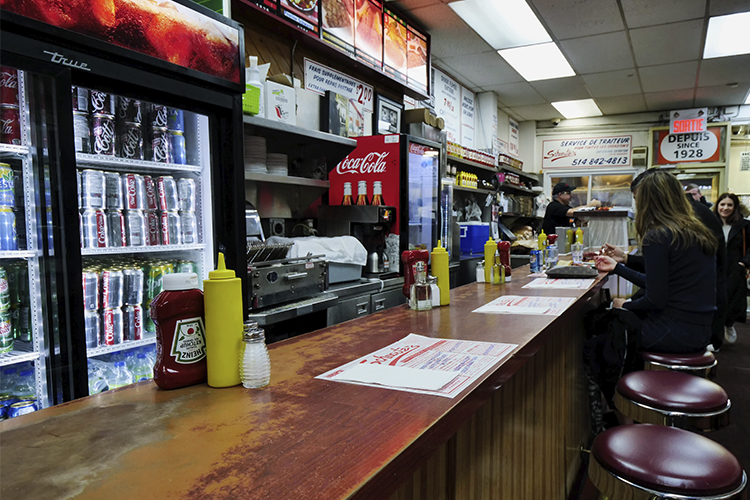
Despite competition, Schwartz’s Deli has been in business since 1928. Photo by Alissa Muller.
This issue is only aggravated by gentrification, which causes rent prices to increase dramatically. According to a report by rentals.ca, the average rent price went up more than 34 per cent on average, making it the highest increase in the country.
The competitiveness of the industry is what allows it to flourish, but it is also what makes it especially fragile.
